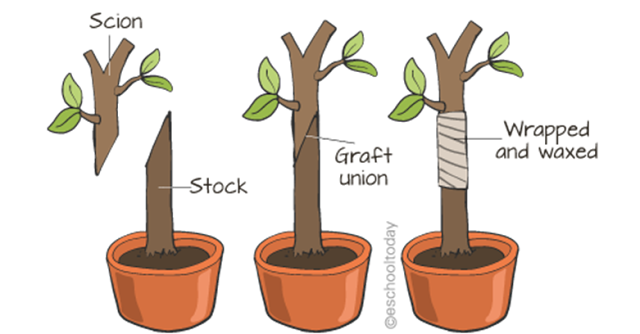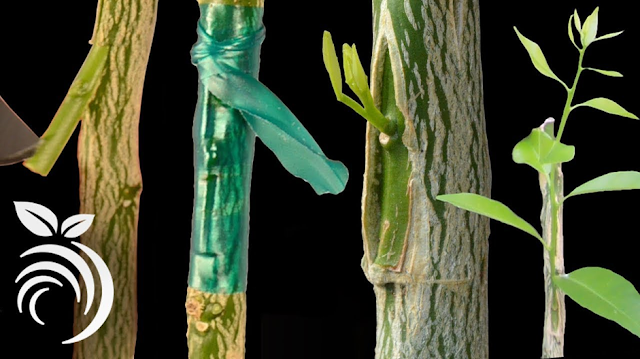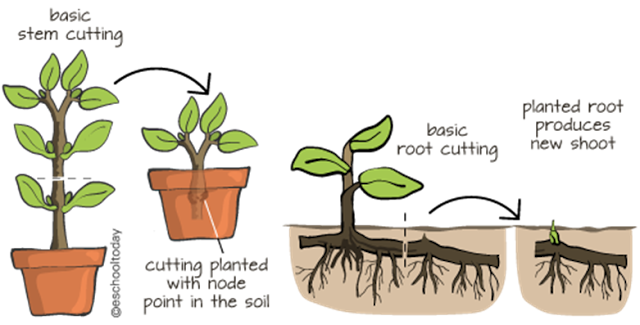Artificial vegetative propagation is a type of plant reproduction that is accomplished through artificial means involving human intervention. The most common types of artificial vegetative reproductive techniques involve cutting, layering, grafting, suckering, and tissue culture. These methods are employed by many farmers and horticulturists to produce healthier crops with more desirable qualities.
Table of Contents
Principal Methods of Artificial Vegetative Propagation
The main methods of vegetative propagation used in practice are as follows:
(i) Cuttings
(ii) Layering
(iii) Grafting and budding
(iv) Suckers
(a) Cuttings
These are portions of plants which are cut and used for multiplying the plant. They may be stem, whole leaf or piece of the root. Examples of plants which use cutting are sweet potatoes, cassava and ornamentals such as Bougainvillea and Hibiscus.
(b) Layering
This involves the induction of the plants to produce roots on their stems before these stems are severed from their parent plant to be used for producing new individuals. The plants are induced to produce roots when the stem part is buried in a medium which is kept moist. The wounding of the part of the stem which buried exposes the stem cambium which gives rise to roots. Further the wounding and/or bending of the branch blocks downward movement of materials synthesised in the leaves. These accumulate in the part which is buried thereby promoting rooting.
(c) Grafting and Budding
Grafting is the uniting of two separate, usually woody, structures. For example, the union of a stem to a root or more commonly the union of two stems. The upper part is called the scion has usually one or more buds which give rise to the future fruiting plant. Budding is a rapid method which is confined to small branches of large or small plants. The diameter of stem being budded is usually 6-25mm. Budding is particularly successful with tree crops e.g. citrus, avocado and cashew. The bud or scion must be taken from a high yielding tree of good quality, while the rootstock must be hardly and vigorous. After the bud has set and started to grow the part of the stock above the bud must be cut off.
 |
| Grafting – Artificial Vegetative Propagation |
(d) Methods of Budding
The commonest method of budding is T-budding which is widely used in the budding of citrus. The procedure in citrus involves the following.
(i) Incision of a T-shaped cut in the stem of the rootstock at a height of about 45cm using a special, sharp knife.
(ii) A well-developed vegetative bud from a desirable tree is then excised from the tree and inserted into the T-cut by first raising the flaps of the bark in the cut. The bud union is then carefully wrapped either with raffia or budding tape to prevent water entry as this would cause rotting. This tape is removed later after the bud has taken.
(iii) After the bud has taken the part of the rootstock above the bud is half broken and then bent and later on removed completely by severing it off with a sharp knife. Under most wet environment (more rainfall) inverted T-budding is used in which case the bud is inserted into the cut from below.
The diagrams below are showing how to carry out budding in citrus trees.
 |
| Budding as Artificial Vegetative Propagation |
Suckers
Suckers are special shoots produced by some plants (e.g. banana). These are divided from the parent plant and transplanted to grow naturally into a new plant.
Discover more from Education Companion
Subscribe to get the latest posts sent to your email.
